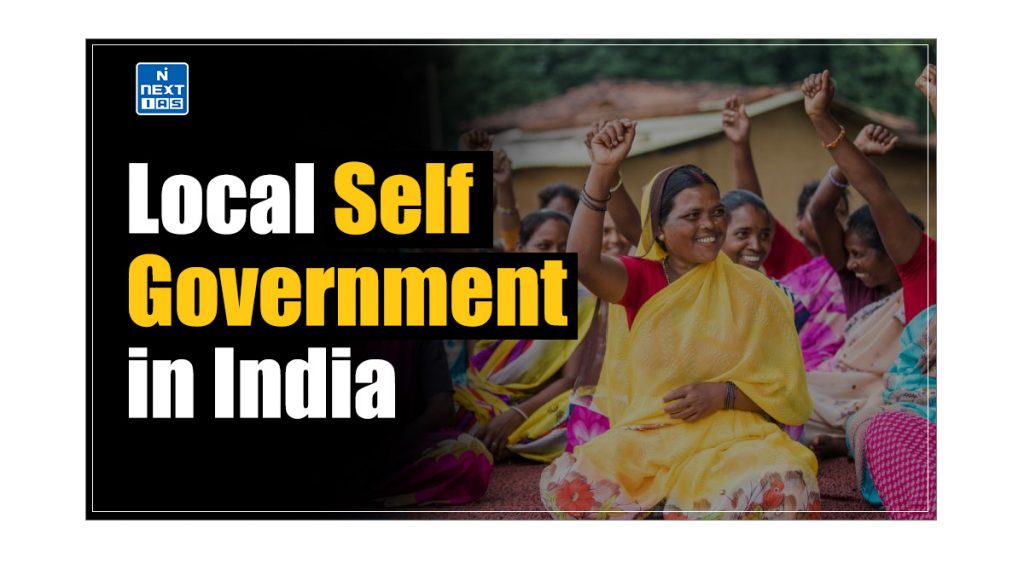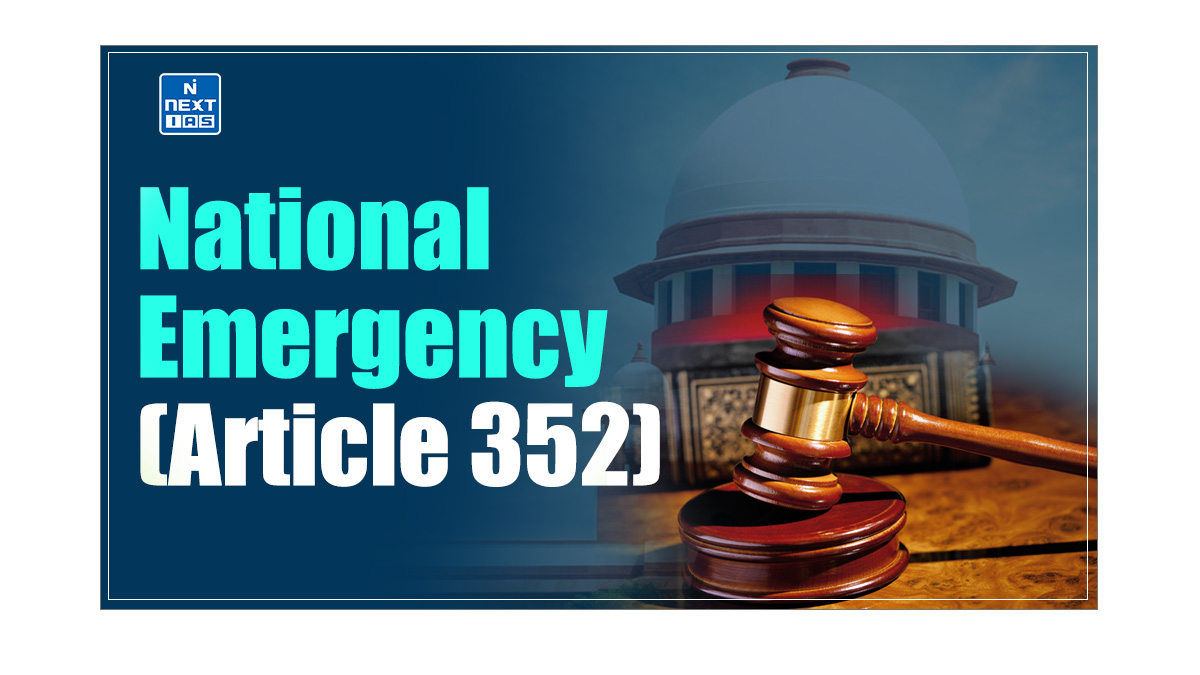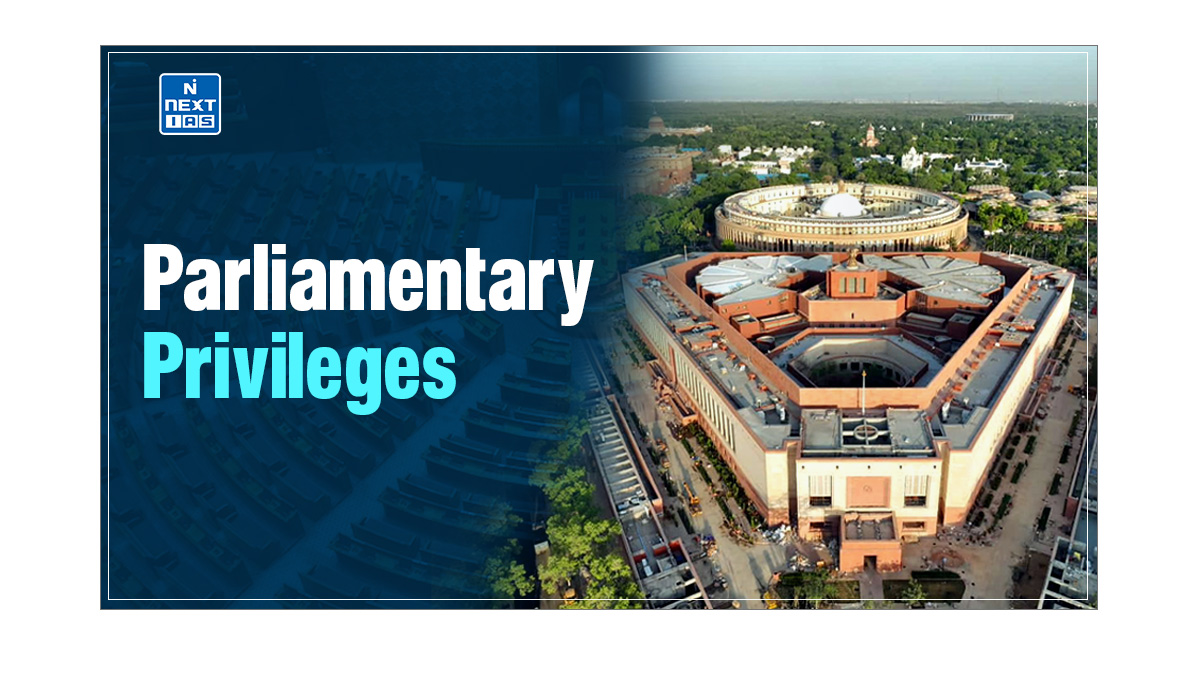
Local Self-Government in India is a cornerstone of a vibrant Indian democracy. By enabling grassroots participation in decision-making and implementation, Local Self-Governance in India has helped transform representative democracy into a participatory democracy. This article aims to study in detail the Local Self-Government (LSG) in India, its components including Panchayati Raj Institutions (PRI) and Urban Local Bodies (ULB), role, significance, challenges faced, and more.
What is Local Self-Government in India?
- Local Self-Government in India is a system of administration where local bodies, elected directly by the people, manage the affairs of the local community, such as villages, towns, or cities.
- Local Self-Government in India has been established as the third tier of government beneath the Central Government and State Government.
- It aims to devolve powers and resources to the local level so as to empower local people to have a say in matters that impact their daily lives.
Structure of Local Self-Governance in India
In India, the structure of local self-governance involves two types of institutions/bodies – Panchayati Raj Institutions (PRI) and Urban Local Bodies (ULB).
Panchayati Raj Institutions (PRI)
- Panchayati Raj Institutions (PRI) refer to the System of ‘Rural Local Self-Governance’ in India i.e. a system of governance of Rural Areas through the representatives elected by the people.
- They have been established in all States by the 73rd Constitutional Amendment Act, 1992 as the third tier of government in the rural areas.
- Aiming to build democracy at the grassroots level, they ensure that local populations participate directly in the decision-making process.
Read our detailed article on Panchayati Raj Institutions (PRI).
Urban Local Bodies (ULB)
- Urban Local Bodies (ULB), also known as Municipalities, refer to the System of ‘Urban Local Self-Governance’ in India i.e. a system of governance of Urban Areas through the representatives elected by the people.
- They have been established in all States by the 74th Constitutional Amendment Act, of 1992, as the third tier of government in urban areas.
- This system ensures that urban populations participate directly in the decision-making process, thereby enhancing the effectiveness and accountability of urban development initiatives.
Read our detailed article on Urban Local Bodies (ULB) and Types of Urban Local Government.
Significance of Local Self-Governance
As the third tier of the government, the Local Self-Government in India carries multifarious significance as can be seen as follows:
- Participatory Democracy: Local self-governance fosters citizen participation in decision-making processes, ensuring that governance is more inclusive and representative of local needs and priorities.
- Citizen Participation: It fosters a sense of ownership and civic engagement among residents, encouraging them to actively participate in decision-making processes.
- Accountability and Transparency: Elected representatives at the local level are more accessible to the community, which enhances accountability and transparency in governance.
- Responsive Governance: Local bodies can respond swiftly to issues and challenges specific to their area, leading to more effective and efficient service delivery.
- Improved Efficiency: Local bodies often possess a deeper understanding of local needs and challenges, allowing for more efficient allocation of resources.
- Empowerment and Capacity Building: Decentralization empowers local communities by building their capacity to manage resources, plan development activities, and resolve conflicts.
- Inclusiveness: Local governance provides a platform for marginalized communities such as SCs, STs, Women, etc to have their voices heard and their needs addressed.
Issues with Local Self-Government in India
The major issues related to the Local Self-Government in India are as follows:
- Inadequate Financial Resource: Limited powers of levying taxes and very few grants from the state mean that the local bodies have inadequate finances. This restricts their abilities to undertake development projects and provide essential services.
- Inadequate Devolution of Functions: Most of the states have been reluctant to devolve functions to the local bodies.
- Excessive Control by Bureaucracy: In some States, the local bodies have been placed in a position of subordination to the government offices. This hampers their ability to make and implement decisions.
- Tied Nature of Funds: Over 90% of the funds that the local bodies handle are tied to some schemes. Insufficient untied funds demotivate them from meaningful planning processes.
- Functional Overlap: There are functional overlaps with other government agencies such as Block offices, Para-statal agencies, etc. This creates confusion and conflicts.
- Capacity Constraints: Local bodies often face a shortage of trained personnel and resources, hindering their effective functioning.
- Also, most of the ULB members are either illiterate or semi-literate and know little about their roles and responsibilities. This further hampers their effective functioning.
- Political Interference: Excessive interference by higher levels of government can undermine the autonomy of local self-governing bodies.
Way Forward
The following steps could be taken to strengthen the Local Self-Government in India:
- In order to increase their financial resources and make them independent, the local bodies should be given independent sources of finance. For example, the power to levy local taxes.
- The states should be incentivized to devolve more functions to the local bodies.
- There should be clear-cut demarcation of functions between PRIs and other government agencies.
- The members of the local bodies should be imparted training to enhance their capabilities.
- As recommended by the 15th Finance Commission, there should be online auditing of the local bodies so as to enhance their accountabilities.
- The concept of Competitive Federalism among states needs to be extended to the third tier of government (local bodies) as well. This will help improve their performance.
Conclusion
By empowering local communities and enhancing their capacity to manage their own affairs, Local Self-Government in India has helped strengthen the grassroots-level democracy. However, several challenges coming in the way have hampered the realization of its true potential. Necessary steps should be taken to strengthen them so as to ensure that governance is truly of the people, by the people, and for the people.
Frequently Asked Questions (FAQs)
Who is the father of Local Self-Government in India?
Lord Ripon is the father of Local Self-Government in India.
Who introduced the Local Self-Government first in India?
Lord Ripon introduced Local Self-Government in the year 1882.






